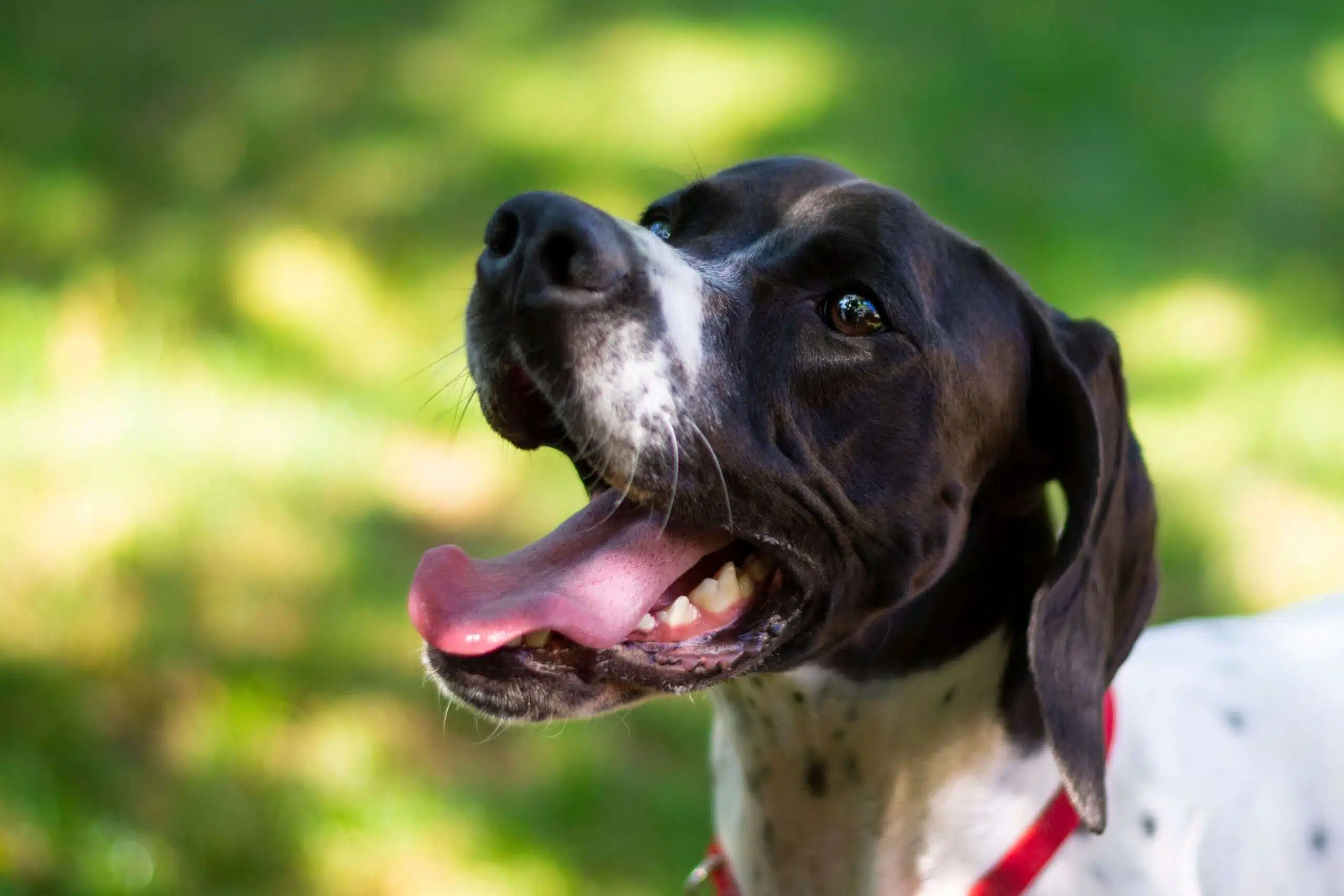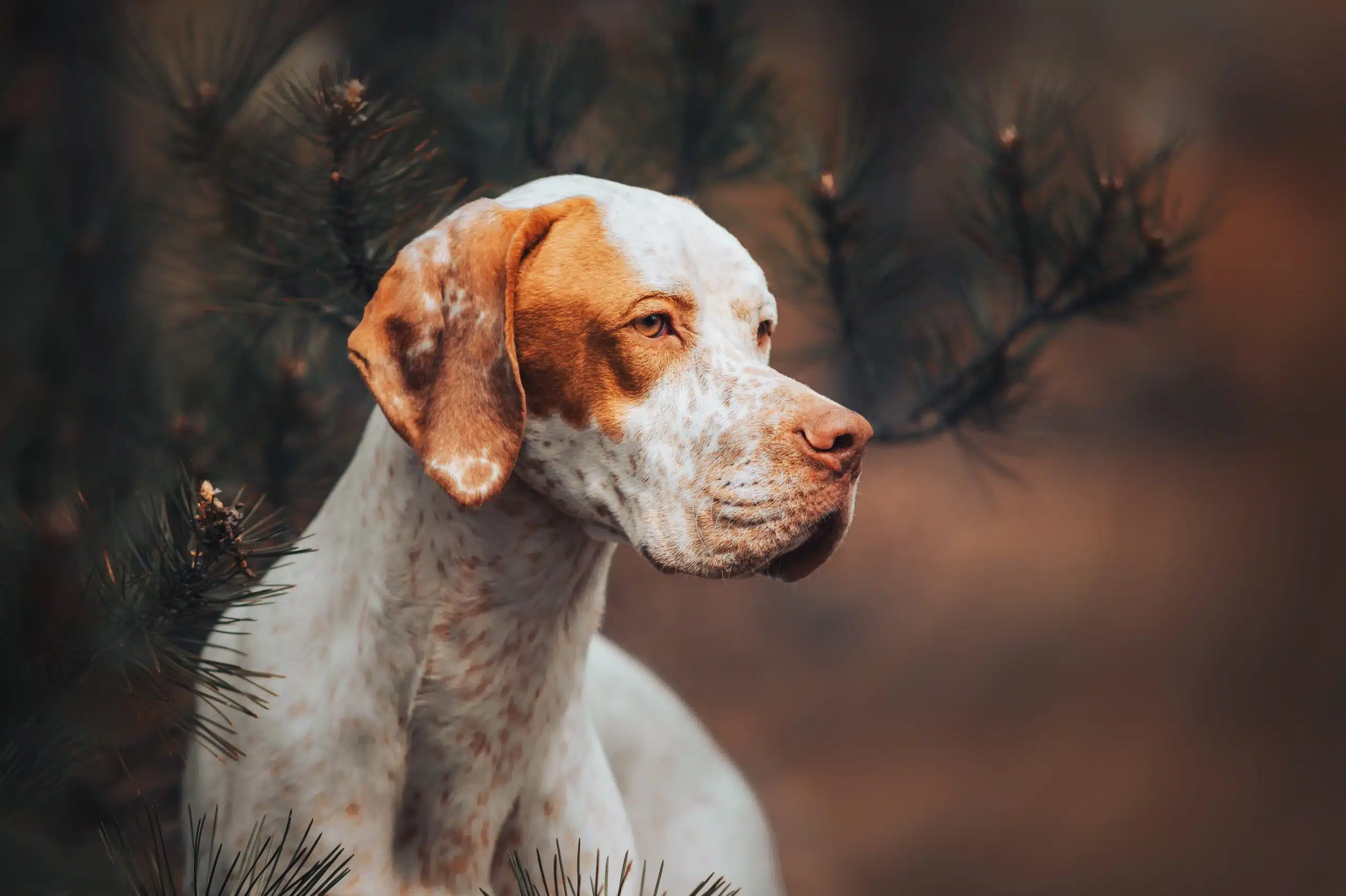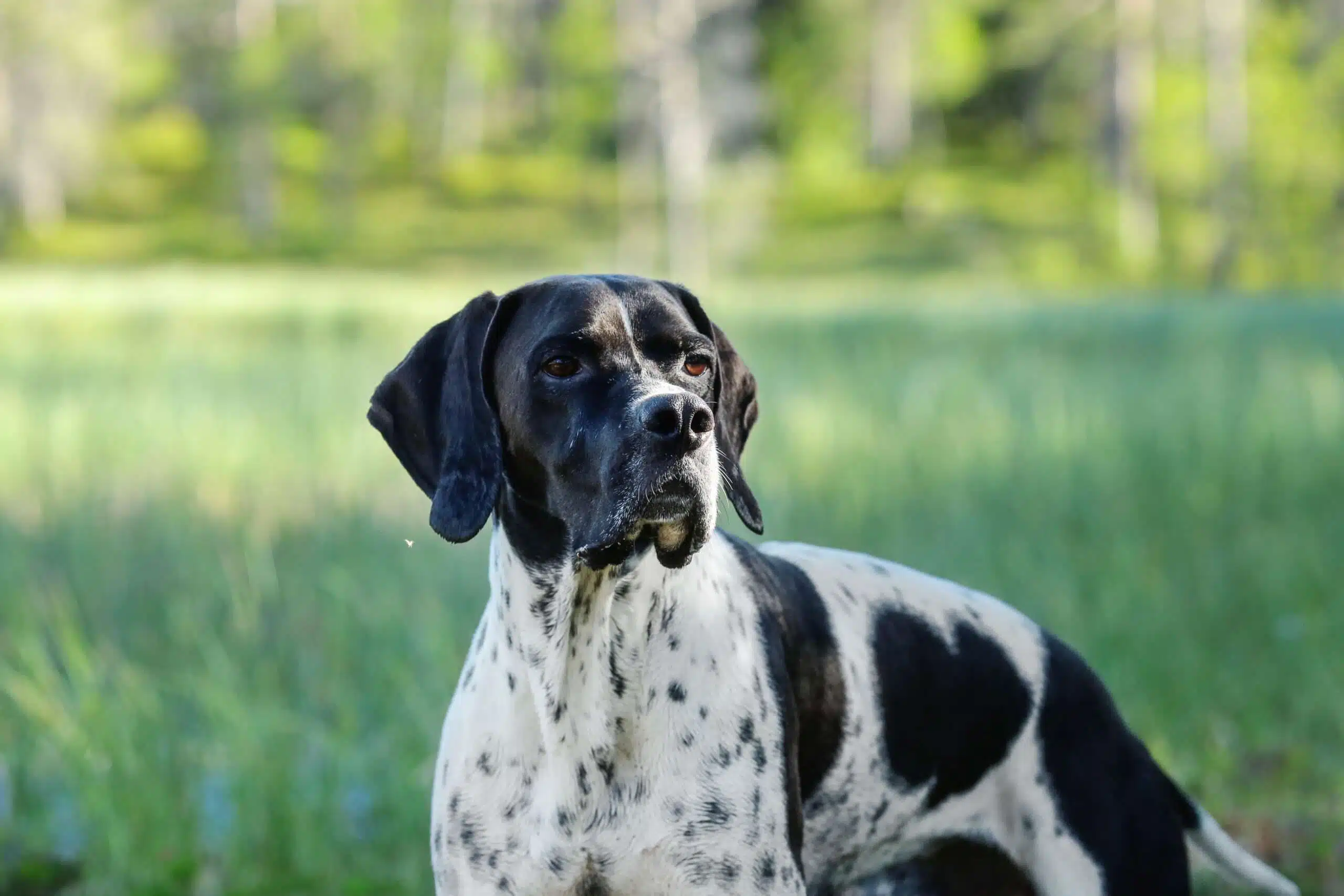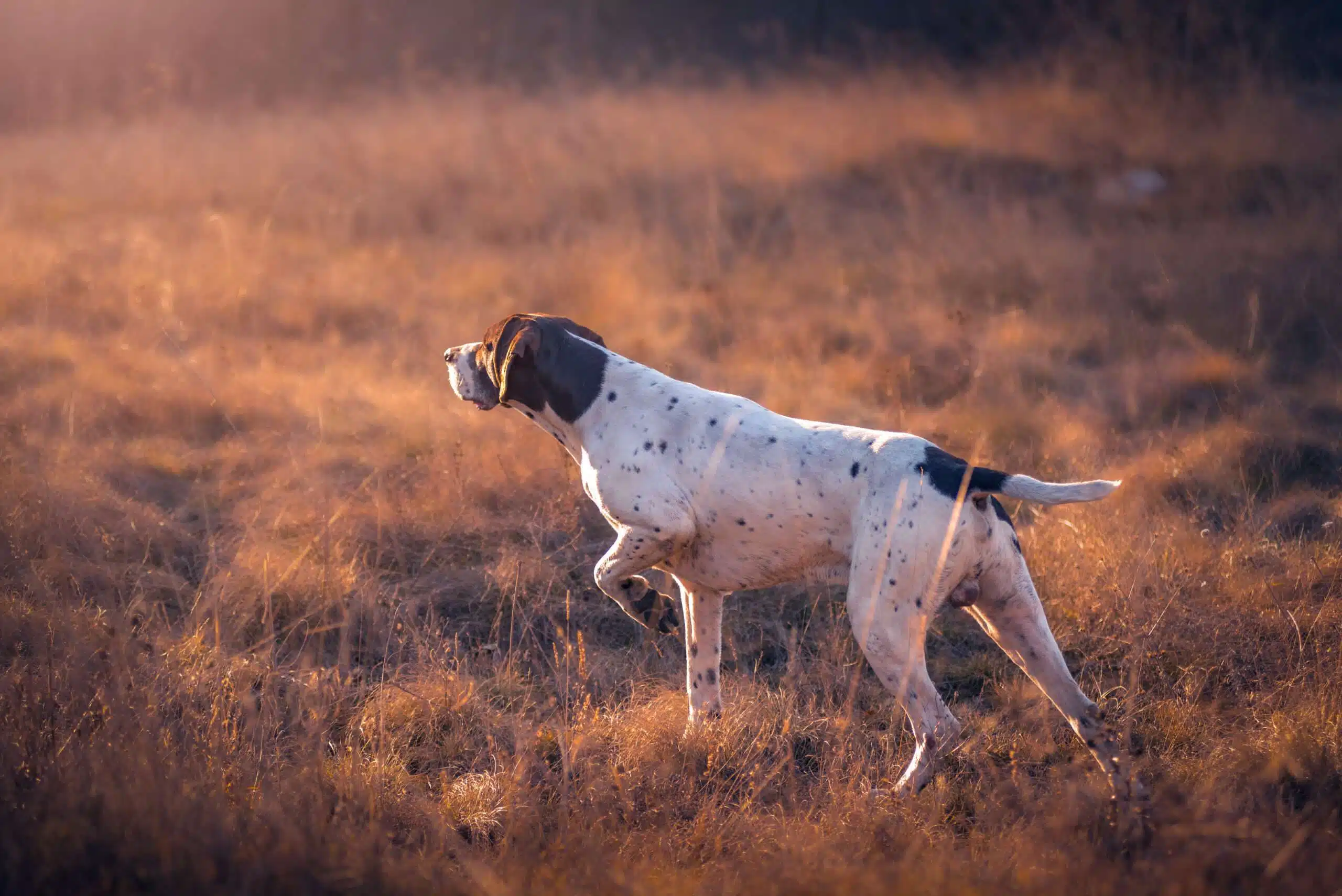Pointer

It is widely believed that the Pointer’s ancestors origins may be traced back to Spain centuries ago, however it was selectively bred in Britain and referred to as an English Pointer. To create this breed, a number of varieties were likely employed such as Spanish Pointing Dog, Foxhound, Greyhound, Bloodhound and additional setter breeds–maybe even incorporating a Bulldog.
The Pointer is one of the oldest Sporting breeds, utilized as far back as the 17th century to point hares and birds for shooting. His compact form houses a great deal of hunting spirit and competitiveness which makes him an ideal breed in field trials. Possessing a remarkable aesthetic appeal with its short coat featuring either liver, lemon, black or orange shades – often accompanied by white markings – this canine has been greatly esteemed over time.
At first glance, the Pointer is a dignified dog with sensible demeanors. However, underneath it all lies an incredibly playful and mischievous pup that loves being around family members. While his powerful presence in field trials has been noted for centuries, your beloved Pointer will also be more than happy to curl up on the sofa with you during television marathons or bond over ball games with your children. Not only that – he’ll even keep watch of strangers lurking nearby! If you’re looking for a companion who can both protect and entertain you and yours alike like no other breed can, look no further than The Pointer!
When interacting with other people or dogs, he is known to be amicable and somewhat reticent but not typically aggressive. While cats may trigger his hunting sense, if raised together from a young age he can get along harmoniously in an indoor environment. Beware of outdoor felines though as they might become easy targets for him! Pet birds should also take extra caution around this breed.
Needing a firm and steady hand in training, the Pointer can be quite stubborn. Yet his remarkable hunting skills become evident at an early age, with each knowledge he acquires becoming ingrained for life. In addition to its stylishness on the field, this breed is known for its endurance as well as unrivaled nose that make it truly a “bird-finding machine.” Above all else though, the Pointer can develop into an unwavering companion should you give it your time.
If you are searching for the perfect home for your Pointer, outdoor life is a must. This breed excels not only in hunting but also agility and obedience trials. As long as joint health and overall wellness permits, these pups make incredible jogging pals or biking partners – just don’t be shocked if they have to pause every now-and-then to point out possible prey! When left alone during the day, most of them will find solace sleeping on their master’s couch until being reunited when evening arrives.
When it comes to grooming, Pointer coats are a breeze. With just weekly brushing with a rubber curry brush, you can bring out the coat’s natural shine and luster. Plus, its fine texture means that shedding is minimal – effortless upkeep for maximum results!
- Group AKC Sporting
- Origin United Kingdom
- Size Medium, Large
- Weight 45 to 75 pounds
- Coat Length Short
- Coat Type Smooth
- Colors Black,Brown,White,Yellow
- Other Names English Pointer
- Temperament Active,Affectionate,Amiable,Even Tempered,Kind,Loyal,Intelligent





